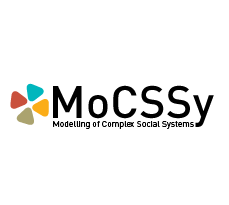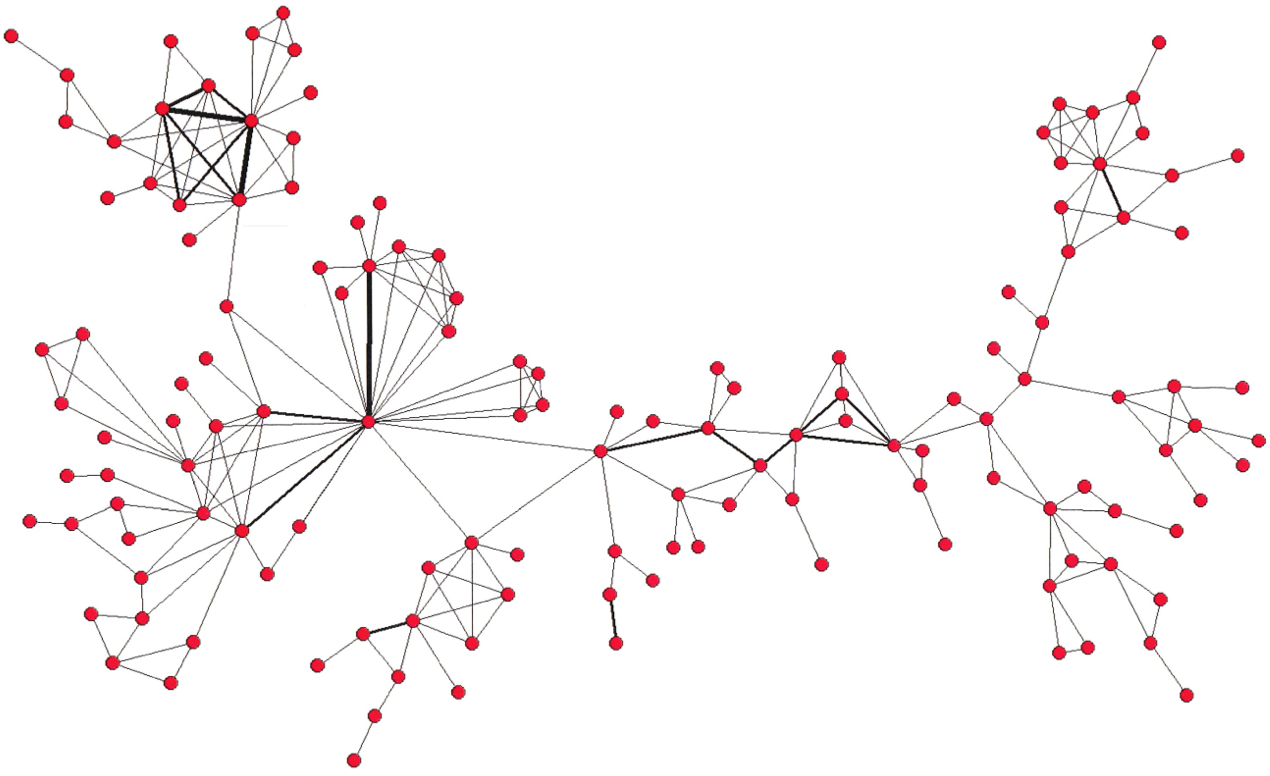Researching Complex Dynamics
MoCSSy Program Research Projects
- Current Projects:
- Past Projects:
- Modelling the Adoption of Clean Energy (MACE)
- Visual Analytics to Support Modelling (VASM)
- Modelling the prevalence of HIV immune escape mutations in human populations
- Disrupting online pornography networks based on Principle Component Analysis algorithm
- A Modelling Approach to Understanding Fall Events in Long Term Care
- Mathematical Models in Gerontology
- Integrating Criminal Social Connections with Spatial Movement
- Youth Gang Formation: A Hybrid Modelling Approach
- Exploratory Spatial Data Analysis using Computational Topology
- A Spatial Approach Linking Human Perception with the Reality of Crime
- Dengue Fever: A Modeling Approach
- Peer Influence on Binge Drinking: A Cellular Automata Model
- Social Interaction of Eating Behavior among High School Students
- Modeling Insurgency and Counterinsurgency (MICI)
- Co-offending Networks Analysis
- A Fuzzy Cognitive Map Approach for Analyzing the Impact of Social Aspects Contributing to Homelessness
- Fuzzy Logic Based Approach to Model Varying Strengths of Attractions
- Analysis of the Social Network of Homeless People
- Salt Intake Given Consumers' Knowledge and Social Influences (SICKSI)
- Fuzzy Cognitive Maps and Cellular Automata: A Hybrid Approach for Social System Modeling
- A System Dynamics Model for Individual Feedbacks in Obesity
- Influence of Licensed Establishments on Crime and Disorder in an Urban Environment
- Counterterrorism in the 2010 Olympics Games (GENIUS)
- Directionality of Criminal Vectors - Phase 1
- Directionality of Criminal Vectors - Phase 2
- Dynamics of the Homeless People in Tri-Cities
- HIV Transmission through Social Contact
- Influence of Social Networks on Obesity (ISNO)
- Mastermind Obesity PURE Study (MOPS)
- Neighborhood Migration and Crime
- Social Influences in Community of Drug Users
- Social Influences on the Stock Market
Current Projects
Contact: Piper Jackson <piper@irmacs.sfu.ca>
Members: Piper Jackson (IRMACS), Nick Athey (Criminology), Chris Giles (Complex Systems Modelling Group), Andrew Sixsmith (Gerontology)
A look at how social networks degrade over the lifetime of an individual, drawing upon existing modelling research on criminal network disruption. We are interested in how to prevent social isolation among older adults, and how social network changes interact with criminal career developments.
Mapping transitions into dependency
Contact: Sarah Canham <scanham@sfu.ca>
Members: Sarah Canham (Gerontology), Mei Lan Fang (Gerontology), Ahmad Al Attar (Mechatronics), Piper Jackson (IRMACS), Andrew Sixsmith (Gerontology)
Using data generated from the Resident Assessment Instrument (RAI), which is used to track the mental, physical, and social health of residents in long term facilities in Canada, we aim to identify key factors which lead to increasing levels of dependency.
Contact: Mei Lan Fang <mlfang@sfu.ca>
Members: Sarah Canham (Gerontology), Mei Lan Fang (Gerontology), Piper Jackson (IRMACS), Andrew Sixsmith (Gerontology)
Geographical modelling of social services necessary to support an aging population in the Lower Mainland. We plan on integrating geographic and demographic quantitative data as well as stakeholder impressions generated through a participatory mapping exercise.

Contact: John Prpic <prpic@sfu.ca>
Members: Piper Jackson (IRMACS), Thai Nguyen (Computing Science), John Prpic (Business)
This project will model the theory of Crowd Capital to deepen our understanding of the emerging paradigm of crowd-engagement through IT. We seek to learn about the dynamics between IT-artefacts, organizations, individuals, and crowds, configured for specific knowledge purposes in our modern world.
Extremist Website User Modelling

Contact: Hilary Kim Morden <hmorden@sfu.ca>
Members: Richard Frank (Criminology), Hilary Kim Morden (Criminology), Ricky Wong (Computing Science)
Investigation into the structure of user behaviour and social connections on extremist websites.
High Frequency Offender Navigation
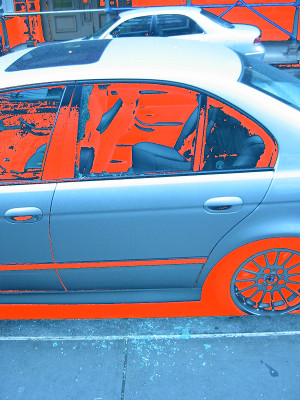
Contact: Andrew Reid <aar@sfu.ca>
Members: Nick Athey (Criminology), Chris Giles (Complex Systems Modelling Group), Piper Jackson (IRMACS), Eric Joel, Eugene Myroniuk (Computing Science), Andrew Reid (Criminology)
An extension of our previous work on criminal offender navigation looking at the movement of high frequency offenders in an urban context.
Marijuana Legalization Forecasting
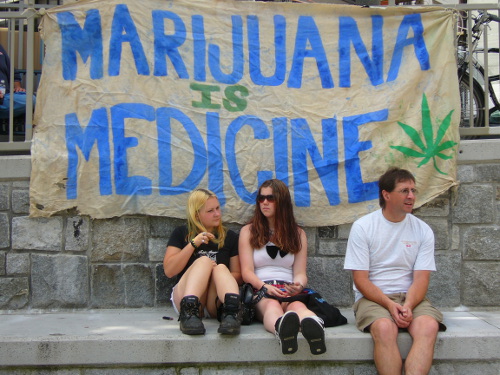
Contact: Nick Athey <nathey@sfu.ca>
Members: Nick Athey (Criminology), Philippe Giabbanelli (Health Sciences), Chris Giles (Complex Systems Modelling Group), Hilary Kim Morden (Criminology), Andrew Reid (Criminology)
Marijuana legalization (both medical and recreational) has become a reality in a number of states in the U.S. This project wants to look at the factors that have contributed to this surprising change, and attempt to forecast which other states will follow.
A Simulation Model of Crowed Dynamics
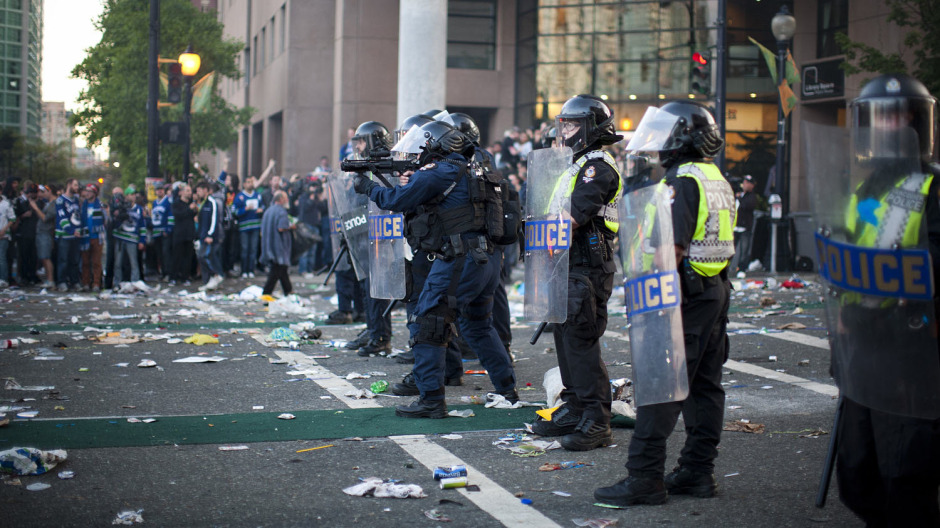
Contact: Valerie Spicer <vspicer@sfu.ca>
Members: Andrew Reid (Criminology), Valerie Spicer (Criminology), Vijay Mago (MoCSSy), Hilary Kim Morden (Criminology), Piper Jackson (Computing Science), Vahid Dabbaghian (MoCSSy)
In the wake of the 2011 Stanley Cup Playoffs riot in Vancouver, there has been a seemingly endless stream of coverage about the initiation, development, and suppression of the event. Some speculate about the role semi-organized groups played in instigating the event, many question the role of otherwise respectable citizens who got caught up in the excitement and participated in mob behaviour, and still others criticize police and emergency management groups for being ill-prepared and not handling the catastrophe effectively. In light of all of the unanswered questions that have surfaced, we seek to develop a mathematical model that effectively simulates characteristics of riot behaviour. In doing so, we hope to better understand the phenomenon of riots and techniques to effectively suppress them.
Past Projects
Under "past projects" we list all projects that have either resulted in a publication or of which one well-demarcated phase has been completed. Some of these projects have, and some others may still, provide a good basis for future MoCSSy projects, provided there is interest among the members to pursue it.
Modelling the Adoption of Clean Energy (MACE)

Contact: Philippe Giabbanelli <giabba@sfu.ca>
Members: Philippe Giabbanelli (Health Sciences), Merrill Fung (Physics)
An exploration of the possibilities for applying agent based modelling techniques to simulating the adoption of clean energy sources.
Visual Analytics to Support Modelling
Contact: Philippe J. Giabbanelli <giabba@sfu.ca>
This reading group will review a selection of papers and examine how they support different stages of the modelling pipeline.
Modelling the prevalence of HIV immune escape mutations in human populations

Contact: Zabrina Brumme <zbrumme@sfu.ca>
Members: Zabrina Brumme (Health Sciences), Piper Jackson (IRMACS), Andrew Adams (Mathematics), Kritika Sharma (Biomedical Physiology and Kinesiology, Psychology), Kristine Hong (Health Sciences)
HIV’s capacity for rapid adaptation poses a major barrier to HIV immune control and vaccine design. Human Leukocyte Antigen (HLA) class I-restricted CD8+ T-cells drive HIV evolution through the selection of immune escape mutations in the viral genome. Escape mutations occur in a highly predictable manner based on the HLA alleles expressed by the host. Upon transmission of HIV to a host who lacks the original restricting HLA allele, many immune escape mutations will revert back to the consensus residue, presumably due to fitness costs. However, some escape mutations will persist in the population, leading to concerns that circulating HIV strains will gradually become more “resistant” to host immunity over time.
Disrupting online pornography networks based on Principle Component Analysis algorithm

Contact: Fatima Movahedi <f_movahedi@sbu.ac.ir>
Members: Richard Frank, Fatima Movahedi (Mathematics - Shahid Beheshti)
Internet child pornography presents some unique challenges for law enforcement agencies. The main objective of current studies is to find the key players in online child exploitation networks, those websites displaying a combination of connectivity and hardcore material. So, by removing those from network can create the most disruption in a network can be created.
A Modelling Approach to Understanding Fall Events in Long Term Care
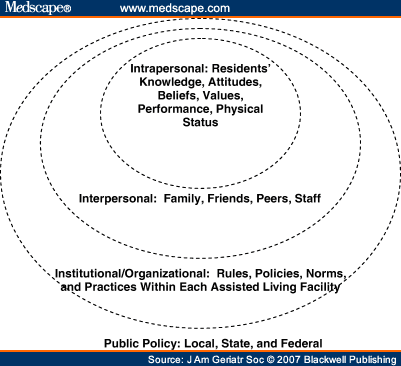
Contact: Vijay Mago <vmago@sfu.ca>
Members: Vijay Mago (MoCSSy), Andrew Sixsmith (Gerontology Research Center), Ryan Woolrych (Gerontology Research Center)
Falls are the number one cause of unintentional injury among older adults in Canada and the analysis of falls within long-term care (LTC) facilities suggests that older people are much more likely to experience severe injury as a result of a fall. So, it is important to identify the causes of falls and the circumstances surrounding these adverse events in order to formulate effective fall prevention strategies. The main goal of this research is to develop a comprehensive model of falls in LTC facilities that will incorporate, simultaneously, the multiplicity of factors contributing to the fall incident. The model will represent the interaction between individual factors and the relationship of these factors to the system as whole.
Mathematical Models in Gerontology

Contact: Vijay Mago <vmago@sfu.ca>
Members: Vijay Mago (MoCSSy), Andrew Sixsmith (Gerontology Research Center), Ben Mortenson (Gerontology Research Center), Ryan Woolrych (Gerontology Research Center), Peter Borwein (MoCSSy), Uwe Glasser (Computing Science), Piper Jacson (Computing Science), Sara Namazi (Computing Science), Vahid Dabbaghian (MoCSSy)
Various issues in gerontology arise from sociology, psychology or biology. A vast literature is available that explains them from the social and medical science viewpoints but we attempt to view these issues from mathematical modeling perspective with an aim to understand them better. Mathematical modelling is the use of mathematics to describe and explain real-world phenomena. It is particularly suitable to investigate important questions about the observed world. In this case, our study is focused on the questions related to ambient assisted living and long term care.
Integrating Criminal Social Connections with Spatial Movement
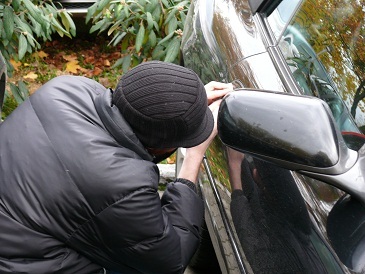
Contact: Piper Jackson <pjj@sfu.ca>
Members: Piper Jackson (Computing Science), Eric Joel (Mathematics)
Environment criminology makes a distinction between a person’s activity space, those areas in which they perform their regular activities, and their awareness space, the larger area of which they are generally aware. With a foundation in the Mastermind project, we will extend a simulation of agents moving through an urban road network to include representation of the social connections among those agents. This social network will be based on co-offending history. With this, we will simulate and investigate the effect of awareness space shared by socially connected simulation agents with regard to their criminal activity. This shared awareness space will be contrasted with the individual activity space of each agent in order to show the effect of shared knowledge on their criminal behaviour.
Youth Gang Formation: A Hybrid Modelling Approach
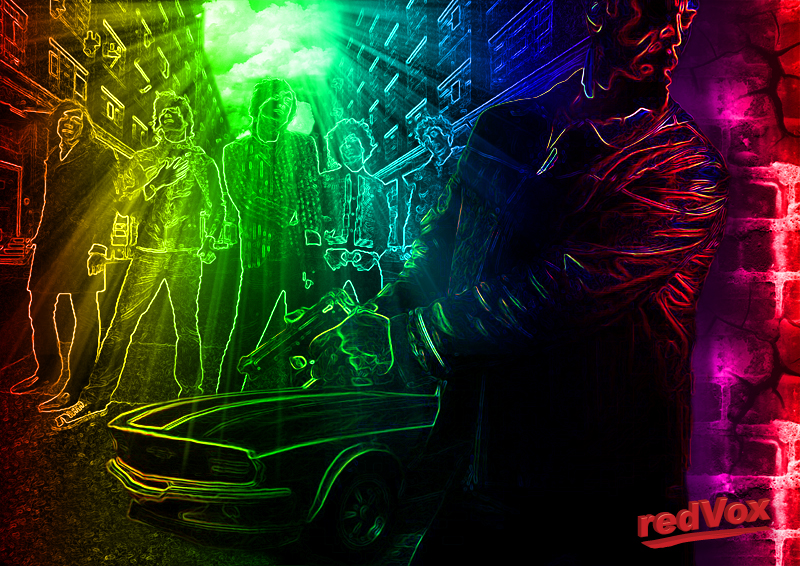
Contact: Hilary Kim Morden <hmorden@sfu.ca>
Members: Ruby Deol (Criminology), Vijay Mago (MoCSSy), Hilary Kim Morden (Criminology), Sara Namazi (Computing Science), Suzanne Wuolle (Mathematics), Vahid Dabbaghian (MoCSSy)
As long as there have been cities and people – organized criminal gangs have formed. Youth gangs, a special type of organized criminal gang, are made up of predominately male adolescents/young adults, rely on group intimidation and violence, and commit criminal acts in order to gain power and recognition, often with the goal of controlling certain areas of unlawful activity. Recent research demonstrates a multitude of factors which might lead to gang affiliation such as poverty, social disorganization, a lack of education, negative influence in a youth’s life – including home and school, limited attachment to community, over-reliance on anti-social peers, poor parental supervision, alcohol and drug abuse, and the need for recognition and belonging as well as many others. Yet, despite having identified these factors the journey to gang affiliation is still not well understood. That is the purpose of this project – to model those factors and relationships which act as gateways or triggers for susceptible youth resulting in affiliation to organized criminal gangs with the goal of better understanding this journey so that practical, effective interventions may be developed.
Exploratory Spatial Data Analysis using Computational Topology
Contact: Vahid Dabbaghian <vdabbagh@sfu.ca>
Members: Vahid Dabbaghian (MoCSSy), Vijay Mago (MoCSSy), Tim Wu (Mathematics)
Spatial Data Analysis is quite well developed, and continuous distributions can be modelled quite accurately at the global level using spatial statistics. However, spatial data is inherently local to at least some degree. Spatial autocorrelation provides an estimate of how local, but it is again a global measure incapable of capturing spatial heterogeneity. We use Computational Topology to approach Exploratory Spatial Data Analysis from the other end: by using strictly local information (adjacency or connectedness), we can infer if there exists a separation of scales in the data, and what these scales are. As a bonus, contrary to statistical methods, Computational Topology does not require us to define compatible (real-valued) distance measure on unlike dimensions, for example time of day and crime type, and circular dimensions (e.g. time of day) are also no longer a challenge.
A Spatial Approach Linking Human Perception with the Reality of Crime

Contact: Valerie Spicer <vspicer@sfu.ca>
Members: Valerie Spicer (Criminology), Jordan Ginther (ICURS), Katie Wuschke (Criminology), Vahid Dabbaghian (MoCSSy)
In 1997 the Grandview-Woodland Community Policing Centre, with the advice and support of the Institute for Canadian Urban Research Studies at Simon Fraser University conducted a community survey, asking 720 people 30 questions related to crime, public disorder and quality of life issues in the Commercial Drive area in Vancouver, British Columbia. Ten years later, the same survey was replicated in the same locations with 727 respondents. Although this neighbourhood went through significant changes over these ten years, the opinions of respondents remained substantially the same. However, the survey also incorporated a mapping component in which people were asked to circle the area they felt had the highest level of crime in the neighbourhood. The difference between the 1997 and 2007 perceptual maps is stark. Crime data is used to explore these maps and to further understand the intricate relationship between perception of crime and public disorder. A CA model will be developed to illustrate the directional movement of crime perception that occurred over this 10 year period.
Dengue Fever: A Modeling Approach

Contact: Tim Kelly <gka25@sfu.ca>
Members: Shamim Amir-Rahmani (Health Sciences), Vahid Dabbaghian (MoCSSy), Azie Kasim (Northern University of Malaysa), Tim Kelly (MoCSSy), Vijay Mago (MoCSSy)
Two and a half billion people are at risk of the mosquito-borne Dengue virus. Four different "serotypes" of dengue exist, and recovery from one only temporarily provides immunity to the other three serotypes. Fifty million people each year contract dengue, and over 250,000 people will develop Dengue hemorrhagic fever (DHF) or Dengue shock syndrome (DSS). Almost 25,000 people die each year from a virus that is carried by a genera of mosquito (Aedes), two species of which are completely adapted to living in cities and households. Mathematical models suggest that herd immunity would need to be over 85% in order for vaccines to be effective, of which none have been approved for widespread use at this time. Dengue is the second-most widespread tropical disease after malaria.
The MoCSSy Dengue Working Group is using mathematical models to predict the most effective approach to reducing the populations of the mosquitoes Aedes aegypti and Aedes albopictus, which are domesticated vectors of Dengue. This includes engaging local communities to measure and affect variables such as breeding locations, house indexes (the frequency of mosquitoes being present in a home), isolation of both febrile and non-frebile carriers, and immunity levels within a community. Dengue contains significant social attributes, including the impact of climate change as well as mitigation efforts where capturing rainwater actually leads to greater opportunities for breeding. Additionally, the globalization of trade and tourism has been shown to propagate both the virus and the vector to both new places and places where either had been previously eradicated. Ironically, eradication of Dengue for extended periods can make a location vulnerable to explosive epidemics if it is reintroduced.
Peer Influence on Binge Drinking: A Cellular Automata Model
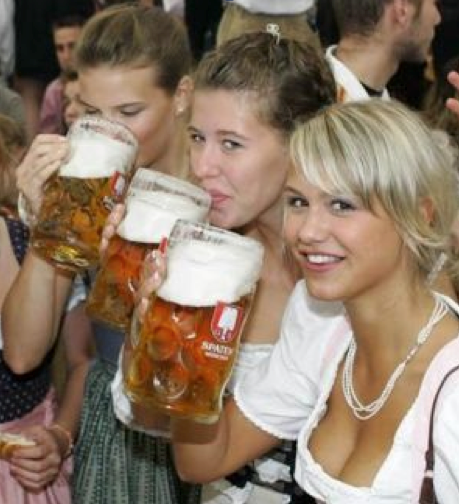
Contact: Andrew Reid <aar@sfu.ca>
Members: Niki Huitson (Criminology), Piper Jackson (Computing Science), Andrew Reid (Criminology), Katie Wuschke (Criminology), Vahid Dabbaghian (MoCSSy)
Research indicates that alcohol consumption seems to be on the rise, particularly within post-secondary students where drinking is extremely high. In these extreme cases of drinking, the term ‘binge drinking’ has been coined. Although there is discrepancy with the definition and purpose of ‘binge drinking’, it appears that peers’ use of alcohol strongly influences one to ‘binge drink’. A cellular automata model will be developed to illustrate the influence of peers (based on their level of alcohol consumption) on ‘binge drinking’.
Social Interaction of Eating Behavior among High School Students
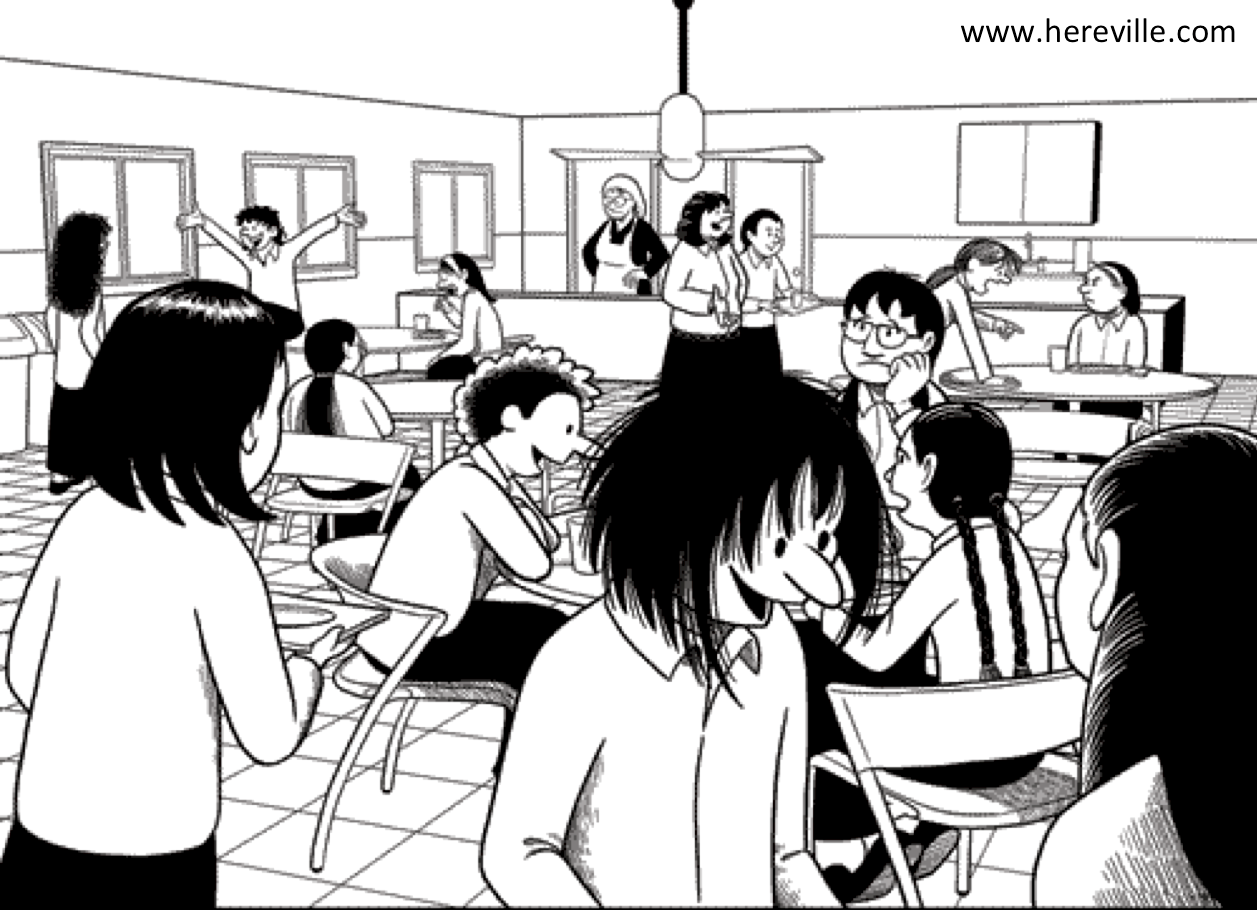
Contact: Vahid Dabbaghian <vdabbagh@sfu.ca>
Members: Azadeh Alimadad (Health Science), Charles Fritz (Geography), Vijay Mago (MoCSSy), Tiankua Wu (Mathematics), Vahid Dabbaghian (MoCSSy)
In this project we propose a cellular automata model to study the impact of social interactions on the eating behavior of a set of classmates high school students. Simula- tion of this model is potentially a powerful tool to illustrate consequences of complex social interactions. We are interested in modeling the eating behavior of group of stu- dents, whose decisions are influenced by each other’s eating behavior, the availability of healthy food, as well as student’s ability to purchase food.
Modeling Insurgency and Counterinsurgency (MICI)

Contact: Philippe Giabbanelli <pjg1@sfu.ca>
Members: Simon Pratt (War Studies, King's College London), Philippe Giabbanelli (MoCSSy), Piper Jackson (Computing Science), Vijay Mago (MoCSSy)
In places experiencing an insurgency, the government usually finds itself struggling to maintain the loyalty of the population and to provide political goods in the face of constant subversion by the insurgent. The insurgent makes use of propaganda, intimidation, guerrilla violence, and acts of terrorism to decrease the trust a population has for the government and to foment rebellion. The Modeling Insurgency and Counterinsurgency (MICI) project aims at modelling this battle for minds on a social terrain, using both Fuzzy Cognitive Maps and Cellular Automata.
Co-offending Networks Analysis
Contact: Mohammad Tayebi <tayebi@cs.sfu.ca>
Members: Mohammad Tayebi (Computing Science), Richard Frank (Criminology), Uwe Gläesser (Computing Science)
The role of criminals and their interactions occupies a central place in criminology. Information about relationships in network of co‐offenders, like their friendship and gang membership helps in understanding the processes and development of criminal careers. But despite the importance of mining the co‐offending networks, there is minimal research related to this topic. Even in the existing works, large scale real world crime data have not been used and so the results can not reflect the actual nature of co‐offending network structures. In this project we analyse a large scale crime data regarding different aspects of co‐ offending networks. We propose a method on how to infer the co‐offending network from crime event data. For this purpose we define the co‐offending strength as the number of crimes that two co‐ offenders were involved in together and then we use this factor as a threshold to generate a family of networks. After constructing these networks we apply the social network analysis techniques to extract and explain the structure and node based properties of these networks. These analyses are done for the whole network but we also visualize different properties of the second largest component of this network. We do the same analyses for the co‐offending network of different crime categories like drugs, burglaries and then compare these networks. Because co‐offending network is a spatio‐temporal network, one of our goals in this project is to demonstrate how the co‐offending network evolves during the time and in the space dimension. To do this, we use a large real world dataset containing 4.4 million events about 9 million people over 5 years.
A Fuzzy Cognitive Map Approach for Analyzing the Impact of Social Aspects Contributing to Homelessness
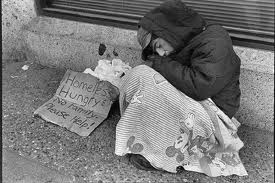
Contact: Vijay Mago <vmago@sfu.ca>
Members: Vijay Mago (MoCSSy), Rakhi Chattopadhyay (MoCSSy), Charles Fritz (MoCSSy), Parastoo Geranmayeh (MoCSSy), Hilary Kim Morden (MoCSSy), Sara Namazi (MoCSSy), Tiankua Wu (MoCSSy), Vahid Dabbaghian (MoCSSy)
Numerous models have been proposed historically in attempts to capture the dynamic nature of the multiple and interactive stressors and protective factors which impact levels of homelessness. However, due to the reciprocal and dynamic nature of these factors, static, classical models have been unable to realize the full extent and effect of the social and structural forces which contribute to homelessness. Fuzzy logic and fuzzy cognitive maps (FCM) are particularly suited to the modelling of complex social problems due to their inherent ability to model vague concepts and then organize them into a specific form (i.e., the map) that is easily understood by social scientists as well as others. Using fuzzy logic, the strength of influence that individual or multiple social and structural factors have on other social and structural factors will be understood and modelled in a comprehensive manner.
Fuzzy Logic Based Approach to Model Varying Strengths of Attractions
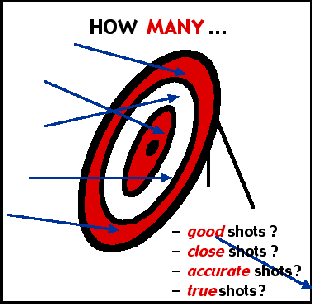
Contact: Vijay Mago <vmago@sfu.ca>
Members: Vijay Mago (MoCSSy), Richard Frank (Computing Science), Vahid Dabbaghian (MoCSSy), Natalia Iwanski (MoCSSy), Andrew Reid (Criminology)
The offenders are attracted to the sites which have greater amount of pull. The force of pull keeps varying with the changing environmental and other influencing factors. This research work will design a fuzzy logic based model to predict the force of attraction of an attractor, with the essential assumption that human cognition (the way the offenders think) is capable of analyzing vague and inexact situations. Initially, the project will quantify the force of attraction of an individual site and later on, the model will be enhanced to include the presence of one or more attractors. The study will help us understand the underlying paradigm of crime patterns.
Analysis of the Social Network of Homeless People

Contact: Vahid Dabbaghian <vdabbagh@sfu.ca>
Members: Laurens Bakker (Computing Science), Andrew Park (MoCSSy), Vahid Dabbaghian (MoCSSy)
Homelessness continues to rise as the social and economic circumstances become unfavourable to many people. One of the problems of homelessness is that homeless people are vulnerable to falling into criminal behaviours such as property crimes and illegal drug use. Sometimes these criminal activities are encouraged and approved by peers and even carried out with them. In other cases, some of these people become targets of others' crimes. In order to understand these activities (and hopefully prevent them), we seek to analyze the social network of these people. In this research, we analyze such networks in cities in the Lower Mainland in BC, and find and develop patterns and models of the networks using real data.
Salt Intake Given Consumers' Knowledge and Social Influences (SICKSI)

Contact: Azadeh Alimadad <aalimada@sfu.ca>
Members: Azadeh Alimadad (MoCSSy), Philippe Giabbanelli (MoCSSy), Michel Joffres (Health Sciences)
Reducing salt can improve population health, specifically towards lowering the overall mean and distribution of blood pressure. We will study how individuals are influenced in the food they buy in supermarkets, and particularly processed food since it accounts for an estimated 75% of the sodium consumed. We will record information such as content and price of several food items available in supermarkets of Vancouver (Canada) and Nice (France). In a first phase, the records will be used to analyze cross-countries differences in salt content for items at a similar price. In a second phase, we will simulate individuals behavior when buying Canadian food under a western diet, and buying french food under a french diet. We will analyze how consumers can reduce their salt intake when they influence each other and compare the labels. This will also address questions such as whether lowering salt intake is more costly at the individual level.
Fuzzy Cognitive Maps and Cellular Automata: A Hybrid Approach for Social System Modeling
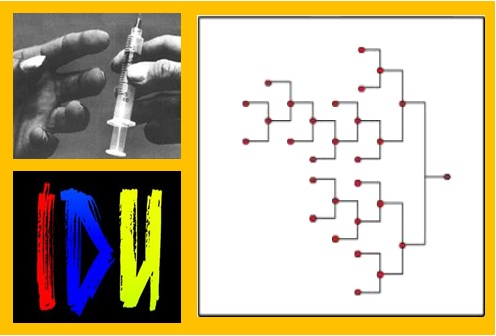
Contact: Vijay Mago <vmago@sfu.ca>
Members: Vijay Mago (MoCSSy), Vahid Dabbaghian (MoCSSy), Azadeh Alimadad (Health Science), Laurens Bakker (Computing Science), Peter Borwein (MoCSSy)
Fuzzy Cognitive Maps (FCMs) simulate the environment by capturing the interplay between concepts of a particular domain. FCMs help in predicting the value of decision variables. Such capabilities of FCMs have prompted researchers to apply FCM in various domains. The FCMs are restricted to find the equilibrium where the values of the concepts stop modifying after some time-steps. The Cellular Automata (CA) modeling technique simulates the influence in neighbourhood environment. There is no theoretical evidence to distinguish the interplay of the concepts at macro and micro-levels. To overcome this issue, we integrate FCMs with CA. FCM is used to capture environmental concepts at macro level and CA is used to see the impact of changes in the neighbouring environment at micro level. The applicability of the model is demonstrated by simulating an environment where Injection Drug Users (IDUs) share paraphernalia.
A System Dynamics Model for Individual Feedbacks in Obesity
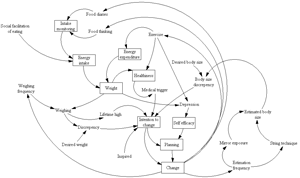
Contact: Philippe Giabbanelli <pjg1@sfu.ca>
Members: Philippe Giabbanelli (Kinesiology & MoCSSy), Thomas Torsney-Weir (Computing science), Diane Finegood (Kinesiology)
In the context of obesity, individuals receive numerous feedbacks. For example, individuals are informed about their body size when using mirrors, they have an estimate about their weight when weighing, and medical issues also constitute a feedback. In this project, we aim at creating a model of individual feedbacks using system dynamics. Our emphasis is quantitative rather than qualitative, as the model must be populated using real-world data in order to study how changes on feedbacks concretely impact the individual. Such changes include the frequency of a feedback (e.g., how often one weighs himself), the delays for the delivery of information (e.g., food diaries parsed weekly). This project benefits from the behavioural study performed in the ISNO project.
Influence of Licensed Establishments on Crime and Disorder in an Urban Environment

Contact: Valerie Spicer <vspicer@sfu.ca>
Members: Valerie Spicer (Criminology), Vahid Dabbaghian (MoCSSy), Jordan Ginther (ICURS, Geography), Andrew Reid (Criminology), Hasti Seifi (Mechatronics).
Licensed establishments have been the focus of several criminological research efforts for interest in the linkages between alcohol, the bar environment, and crime. There is considerable evidence that bars are high risk locations––particularly for violence and aggression. Due to the complexity of social systems it is difficult to understand the impact of these institutions over time. Modeling techniques, however, permit such research interests by simulating complex phenomenon in a virtual environment. In this project we propose a model that focuses on the influence of licensed venues in urban neighbourhoods. By defining network entities as city blocks we are able to model large urban areas while considering a variety of social, environmental, and physical influences.
Counterterrorism in Olympic Games (GENIUS)

Contact: Herbert H. Tsang <htsang@sfu.ca>
Members: Piper Jackson (Computing Science), Andrew Park (MoCSSy), Herbert Tsang (MoCSSy), Mona Vajihollahi (Computing Science)
In Roman mythology, Genius is a guardian spirit of a person or place.
Security remains one of the biggest concerns in the lead up to the 2010 Olympic Games in Vancouver. Police have identified several threats to Olympic security, including anti-globalization, anti-corporate and first nations activists, as well as international extremist organizations. This project models large-scale urban movement in Downtown Vancouver. These simulations could be used as a part of decision support systems in counterterrorism strategies.
Directionality of Criminal Vectors - Phase 1
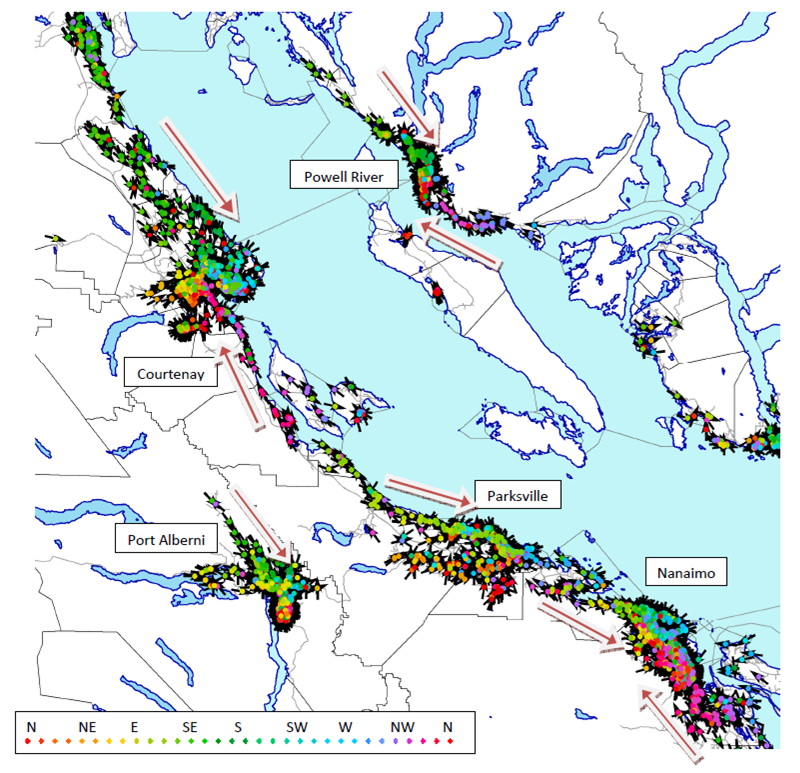
Contact: Richard Frank <rfrank@sfu.ca>
Members: Vahid Dabbaghian (MoCSSy), Richard Frank (Computing Science), Andrew Reid (Criminology), Suraj Singh (MoCSSy URA), Jonathan Cinnamon (Geography)
Crime Pattern Theory predicts that the journey to crime, the offender's direction of travel to the criminal event, will normally coincide with some frequently travelled path, such as to work or shopping. This project investigates the importance of this directionality component, called a criminal activity vector, by analyzing the direction offenders' took to commit their crime. This investigation is done via experimental evaluation and several types of modeling, using 5 years of real police data for the province of BC, Canada. Some of the interesting questions include:
- How significant is the directionality component?
- Do certain offenders exhibit the same directionality patterns?
- Are there attractors which offenders flow towards?
- Can these patterns be modeled mathematically?
Directionality of Criminal Vectors - Phase 2: Modeling Disruptions

Contact: Richard Frank <rfrank@sfu.ca>
Members: Richard Frank (Computing Science), Vahid Dabbaghian (MoCSSy), Natalia Iwanski (MoCSSy), Andrew Reid (Criminology)
This line of research started by an investigation into the importance of the directionality component of Journey To Crime, which analyzed the direction offenders took to commit their crime. While Phase 1 was a static model of the system, Phase 2 investigates and models disruptions to the system, such as the changes in offender movement due to the opening of a bridge or road-segment, or the building of a new shopping-area. The end goal is to understand how changes to the urban landscape affect offender movement and crime. This investigation is done using 5 years of real police data for the province of BC, Canada.
Dynamics of the Homeless People in Tri-Cities
Contact: Vahid Dabbaghian <vdabbagh@sfu.ca>
Members: Afsaneh Bakhtiari (CSMG, Mathematics), Vahid Dabbaghian (MoCSSy), Hengameh Vahabzadeh (Mechatronics)
Homelessness continues to rise due to social and economic crises as well as personal conflicts and health issues. Reports show that most of homeless people have problems of either substance abuse or mental illness, or both. Agencies such as Fraser Health Authority, RCMP, BC Housing, and community organizations try to tackle the homelessness problem. In order to reduce the number of the homeless and resolve related issues, it is important to understand dynamics of the homeless people and how different agencies can work together to provide better and accessible services for them. In this research, we identify available resources and services for the homeless, and their relationships (referral and collaboration) in Tri-Cities by joint works with different agencies. Based on this identification, we develop a System Dynamics model to assess and analyze the effectiveness of the current systems and examine opportunities to improve the systems.
Past Members: Ozge Karanfil (Kinesiology), Andrew Park (MoCSSy), Gema Plaza-Martinez (MoCSSy Visiting Scholar), Yanchao Wang (CSMG)
HIV Transmission through Social Contact
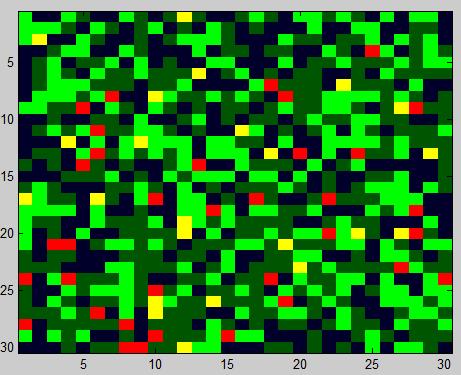
Contact: Vahid Dabbaghian <vdabbagh@sfu.ca>
Members: Azadeh Alimadad (Health Sciences), Vahid Dabbaghian (MoCSSy), Philippe J. Giabbanelli (Kinesiology), Herbert H. Tsang (MoCSSy) and Suraj Singh (MoCSSy URA)
People with risky sexual behaviour are at high risk for contracting HIV infection. Social influences and unknown HIV status can promote unsafe sexual contacts that have a direct impact on HIV transmission. Therefore in high-risk communities, such as community of sex workers, HIV spreads rapidly. Accessibility to HIV test is an intervention that targets such communities. This project develops models to study the dynamics of the HIV epidemic in a community with a risky sexual behavior, in the presence of influences that promote or discourage unsafe sexual contacts.
Influence of Social Networks on Obesity (ISNO)

Contact: Philippe J. Giabbanelli <pjg1@sfu.ca>
Members: Azadeh Alimadad (Health Sciences), Vahid Dabbaghian (MoCSSy), Philippe J. Giabbanelli (Kinesiology)
Research in obesity modelling has found that individuals exert an influence on each other: for example, Christakis and Fowler showed a correlation between the weight gain of an individual and the one of his friends and family. A recent study suggested to consider this social network aspect using a model in which the weight of an individual changes over time solely based on the majority weight of his friends. While this suggests broad trends in the population, the complexity of obesity calls fore more realism in the model. We consider that one is not influenced by the weight of his friends but by their behaviour (e.g. physical activity, diet, etc.), and that the balance of these positive or negative influences received can trigger a change in behaviour. Furthermore, those influences embed the environment: for example, an emphasis in the media on healthy diet may reinforce the influence of a friend with a healthy diet. We aim at having a better understanding of the impact of influences in different social networks, which may suggest targetted measures in order to ensure desirable patterns such as maintaining a stable part of a population in a healthy state.
Mastermind Obesity PURE Study (MOPS)

Contact: Philippe J. Giabbanelli <pjg1@sfu.ca>
Members: Danijela Gasevic (Kinesiology), Philippe J. Giabbanelli (Kinesiology), Ozge Karanfil (Kinesiology), Carrie Matteson (Kinesiology), Gema Plaza-Martinez (Kinesiology), Mona Vajihollahi (Computing Science)
The number of overweight or obese Canadians has dramatically increased over the past 25 years. Overweight and obesity are major risk factors for many chronic diseases, including diabetes, cardiovascular diseases and cancer. Once considered a problem only in high income countries, a number of public health agencies including the World Health Organization have recognized that overweight and obesity are now dramatically on the rise in low- and middle-income countries, particularly in urban settings. Achieving and maintaining a healthy weight is important to reduce the risk of those diseases and improve overall health. This project models physical activity and how it contributes to obesity.
Neighborhood Migration and Crime

Contact: Vahid Dabbaghian <vdabbagh@sfu.ca>
Members: Vahid Dabbaghian (MoCSSy), Jordan Ginther (MoCSSy URA), Piper Jackson (Computing Science), Valerie Spicer (Criminology), Katie Wuschke (Criminology)
Residential migration patterns are the result of complex processes involving households and their neighbourhoods. Simulation models assist in understanding this relationship by contextualizing residential mobility within a theoretical framework. The objective of this project is to model residential mobility resulting from the interaction between a change in the social structure of the household and the positive or negative attractors in the neighbourhood. Specifically, this study links residential mobility to the dynamic interplay between the micro-environment existing within a household and the meso-environment that structures a neighbourhood. The cellular automata model developed in this study incorporates transition rules which govern households when they form the decision to move.
Social Influences in the Community of Drug Users
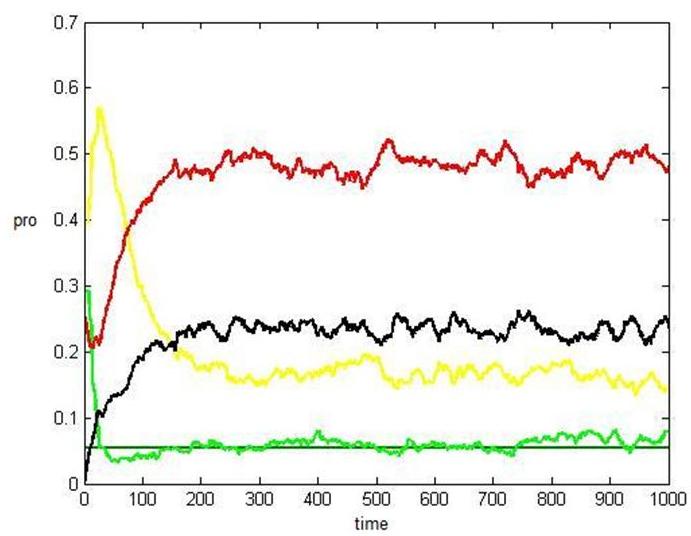
Contact: Vahid Dabbaghian <vdabbagh@sfu.ca>
Members: Vahid Dabbaghian (MoCSSy), Valerie Spicer (Criminology), Suraj Singh (MoCSSy URA)
The spread of hard drug use has become a matter of serious concern in modern societies. Policy makers are searching for relevant strategies to effectively control drug addiction as well as the negative medical and criminal repercussions associated to drug use. The spread of hard drug use (cocaine and heroin) is of particular concern because this type of addiction can lead to high-risk practices such as needle sharing, crack cocaine pipe sharing and drug related criminal activities. Social interactions in a high-risk drug community play an important role in spread of social behaviours especially with those pertaining to drug use and drug acquisition. This research examines the concurrent spread of hard drug consumption and criminal behaviour using a mathematical approach called cellular automata.
Social Influences on the Stock Market - Phase 1

Contact: Bojan Ramadanovic <bojan_ramadanovic@sfu.ca>
Members: Laurens Bakker (Computing Science), Warren Hare (MoCSSy), Hassan Khosravi (Computing Science), Bojan Ramadanovic (CSMG)
Why does the stock market go up and down? Fluctuations occur partly because companies make money, or lose money, but it is far more complex than that. There are many other factors that affect the value of stocks including interest rates, the state of the economy, the time of year, and publicity. We seek to understand how social influences affect stock market behaviour and, ultimately, the value of stocks. In our model, market participants are influenced by their perception of price, the change in their perception of price, traders’ personalities, and other market participants. We use perceived price (which deviates slightly and randomly from the actual price) to account for market participants' imperfect knowledge of price. Our goal is to see how different social influence networks affect price. We specifically want to investigate the cases where (1) the network is completely random, (2) there are cliques that strongly influence one another, but hardly influence anyone else, (3) one participant strongly influences everyone, and combinations of these.
Publication and Preprints
<< View the MoCSSy Publications and Preprints
